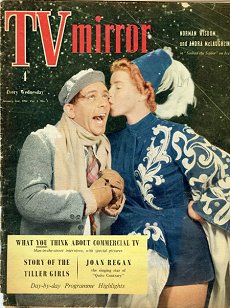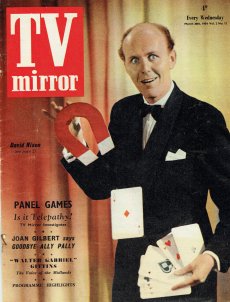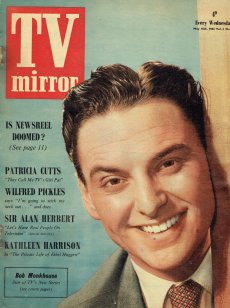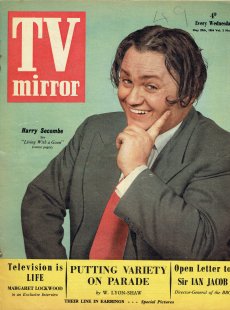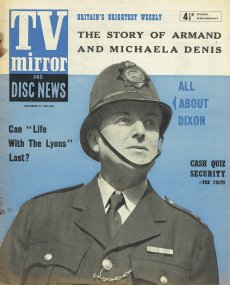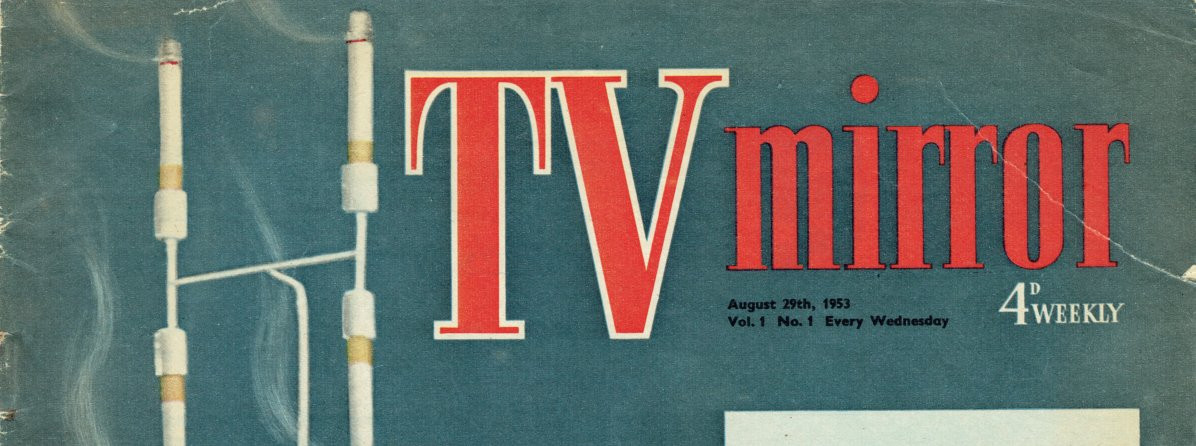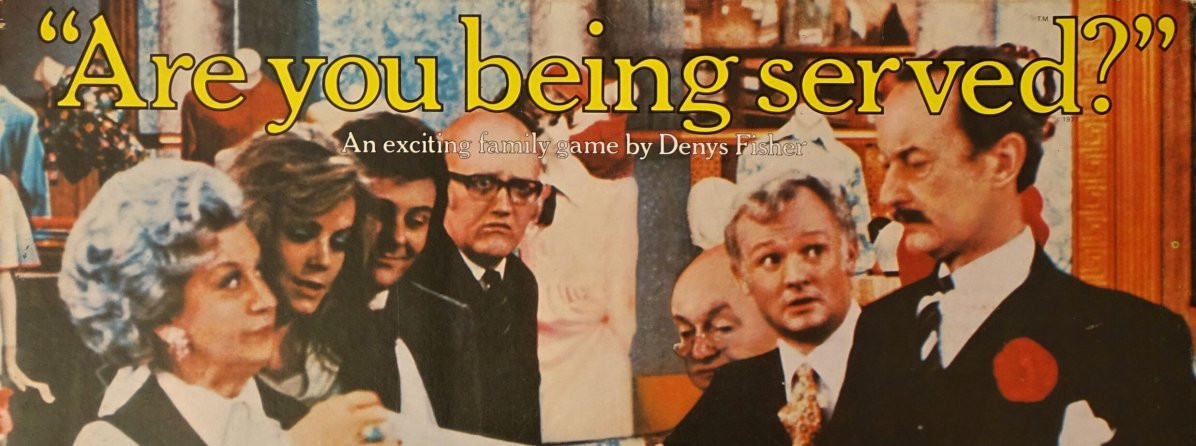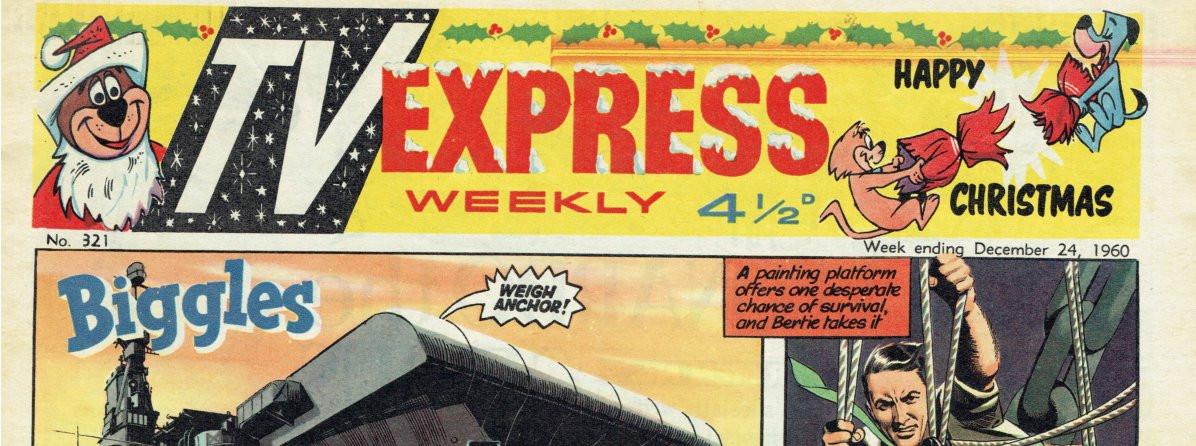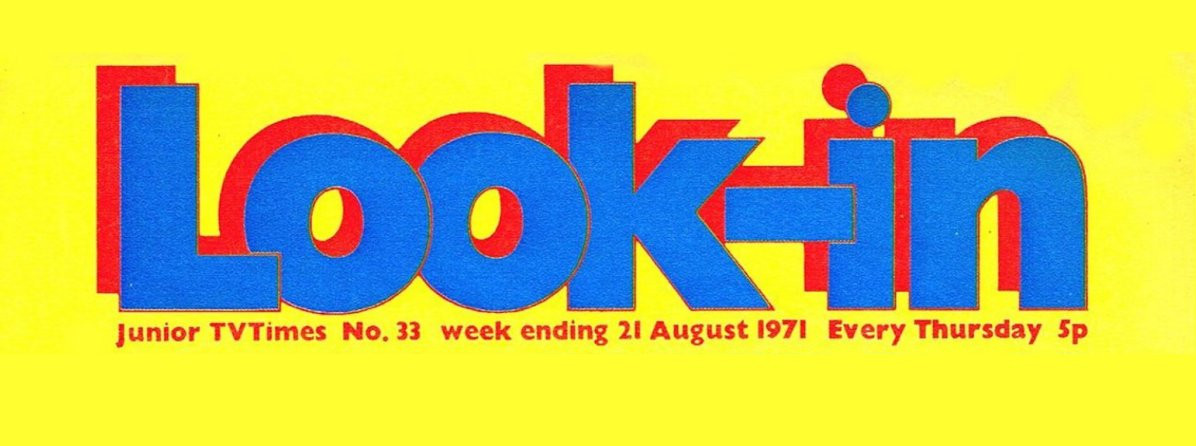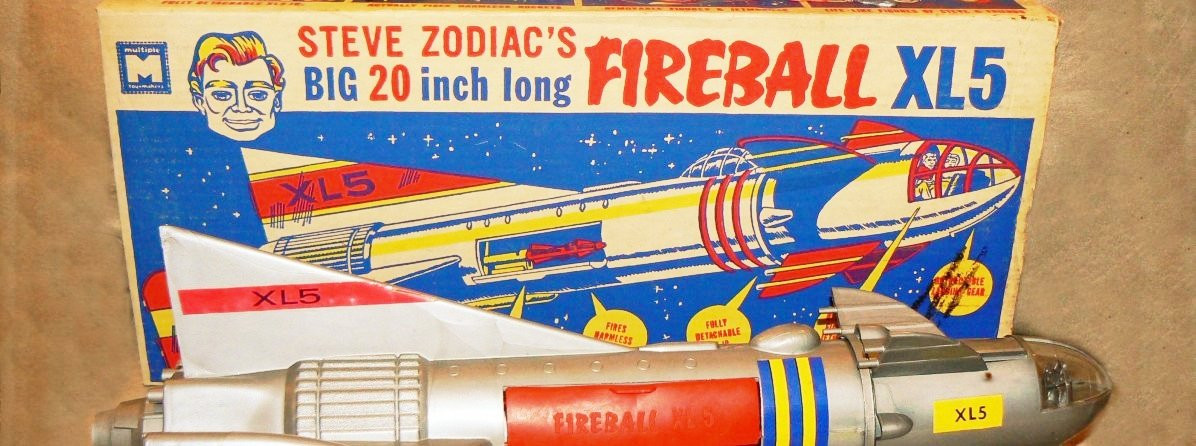
Britain's First Television Magazines
"What would that family want to read about television?"
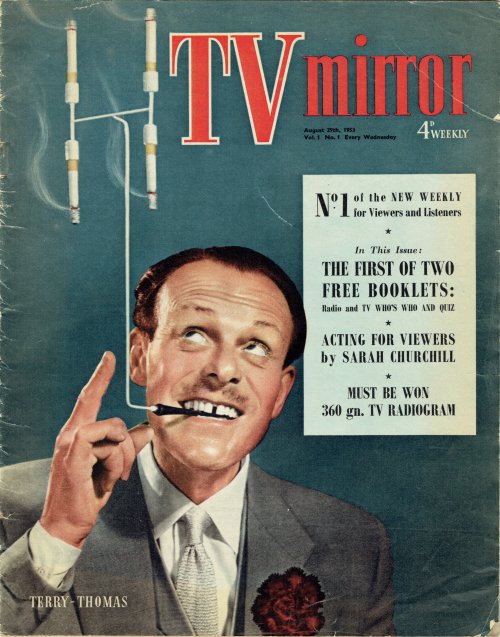
The BBC had been publishing Radio Times magazine since 28 September 1923 in response to a boycot of broadcast listings by the newspapers of that period, following the BBC's refusal to give in to demands by the National Publishers Association to pay 'a hefty-fee' to publish its radio broadcast schedule. Although that relationship had changed after the war when radio and later television became more popular, before the 1990 Broadcasting Act both the BBC and ITV retained exclusive rights over their own weekly television listings. Newspapers were permitted to carry programme schedules only for the day of their publication but other magazines, published as weekly periodicals, were excluded from doing so.
Indeed other magazine publishers in the early days of television broadcasting would almost certainly have deemed it not worth their time in publishing the BBC schedule when, before and for some time after the war, so few people owned television sets. But by the late 1940s there were at least two magazines that were dedicated to television programmes, both of which regarded with great interest the industry pioneers, the performers and the personalities that appeared on this relatively new medium. Scan - The Television Journal (the magazine for viewers) was founded by Nigel Alexius Rainbow in 1948 and appears to have been published in at least two areas, firstly with a Midlands Edition and then a Southern Edition being in print by 1949. At a hefty one shilling (12 old pennies), Scan was an expensive alternative to the Radio Times which cost just twopence, although it ran to 20 pages whilst the RT only surrendered 4 scant pages to its television coverage, the remainder of the publication being dedicated to radio.

Rainbow was a resident of Sutton Coldfield and ran the magazine for two years before relinquishing control in 1950. On Saturday 26 August, The local press (the Sutton Coldfield News) reported that "although Mr Rainbow remains keenly interested television and closely associated at the same time pressure of work in connection with his own business Rathbone Publicity Limited (Engineering and Technical Advertising Consultants) has made the resignation necessary Mr Rainbow passed over the editor’s chair to Mr Mark Johns previously television critic and reporter with the Daily Express and vice-president the South Coast Televiewer Society" Actually, research suggests that the correct title was the South Coast Televiewers Association and its purpose was to solve what they termed as 'the transmitting problem' and improve the television signal over the South Downs to the whole of the South Coast from Deal to Bognor and beyond. Johns later went on to become the Television Editor of the Daily Sketch. Mr Rainbow went on to form Nigel Rainbow and Partners Ltd. (Adverstising).
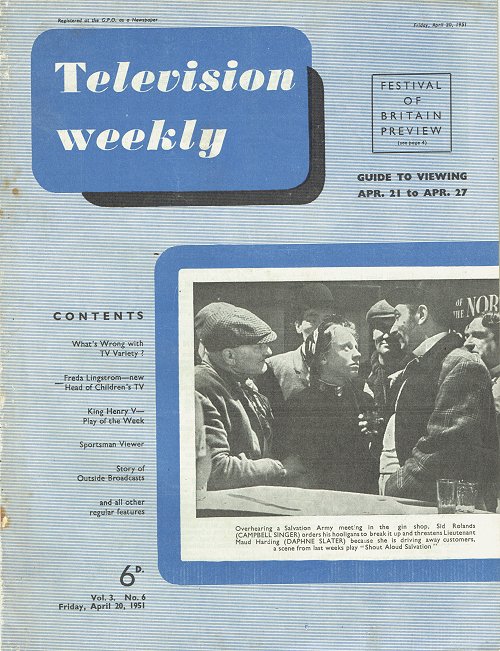
Television Weekly was the second dedicated publication and first appeared in 1949. At double the price of the Radio Times (is cost fourpence), its coverage of television was far superior to anything found in the BBC's own weekly guide. It included reviews of programmes from the previous week and which productions were worth looking out for in the coming one. At 10 pages in represented reasonably good value for money, even though it was printed on inferior quality paper. It improved in quality in 1951 although the price rose by another twopence but doesn't seem to have survived much beyond August (unless anyone can find later issues - I've searched extensively). As a record of critical reviews for programmes where no recording exists it is an invaluable source of information.
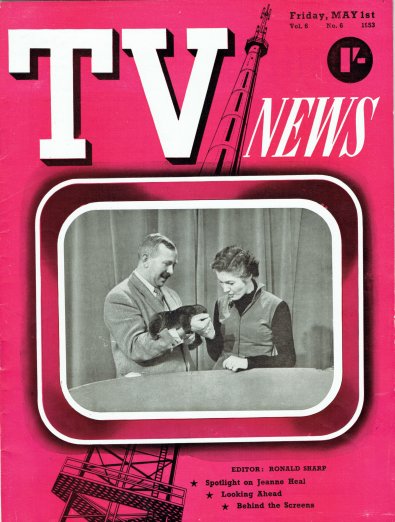
By 1952, Scan was no more, it had been incorporated into a new publication, TV News, which came in a larger format, on better quality paper and with superior photo reproduction. Of course, that was the year before the landscape changed dramatically for British television. In 1953, the BBC were given permission to enter Westminster Abbey and broadcast, for the first time anywhere in the world, the Coronation of a Queen.
When it was announced that the Coronation of Elizabeth ll was to be televised on 2 June, the weeks leading up to the historic event saw the sales of televisions rocket, with an estimated 20 million TV viewers tuning in on the day to watch the young Queen crowned. If television had been regarded up to then as nothing more than a gimmick or a luxury of a select few, then that perception was blown away that summer.
With this new medium sweeping the country there would obviously be an interest from the public for information akin to those published in popular and long established magazines, which focused on entertainment and sport. Magazines that offered glimpses of what television was offering, life behind the scenes and the stars of the small screen. Publications such as Photoplay, first published in 1911, Picture Play (1915), Movie Mirror (1930) and Movieland (1942) had long been successful. As television became popular so similar magazines would spring up and, although they were still unable to publish programming broadcast details in full, they could focus on the these types of articles. As TV News was ceasing publication, TV Mirror hit the newstands for the first time on 29 August 1953 with Terry-Thomas on the cover smoking from a 'TV aerial cigarette holder'.
Not affiliated in any way with Radio Times, TV Mirror was published by Amalgamated Press Ltd. The company was founded by journalist Alfred Harmsworth in 1901 and was by this time a long established producer of newspapers and magazines. Harmsworth began publishing the London based The Evening News in 1894 followed by Daily Mail in 1896 and also initiated The Daily Mirror in 1903. In 1908 he also acquired The Sunday Times. By that time he owned the largest periodical publishing company in the world. From 1912 Amalgamated Press were based at Fleetway House in Farringdon Street, London, E.C.4 and would keep on publishing independently until they were acquired by the Mirror Group in 1959 and renamed Fleetway Publications.
In the first anniversary edition of TV Mirror (28 August 1954) an editorial feature explained how the magazine was visualised in the planning stage:
The first requirement of any new publication is a clear idea of what the contents are to be, and these cannot be defined until there is a positive answer to the question: Who will read the paper?
At our Editorial conferences no one figure emerged as a typical potential reader. It was the background of our readership which was sharply in focus-the background of the home. A living room with a television receiver, sometimes with a lone viewer-the housewife-and at other times the whole family, enjoying the fruits of an invention which we believe to be the country's greatest contribution to family life.
What would that family want to read about television? Certainly not its deeper technicalities, far beyond the comprehension of the average person. They would want news of current and forthcoming programmes; articles and picture features about the people appearing in them. Our readers would want to know something of those who bring the programmes to the screen, and of the workings of the studios.
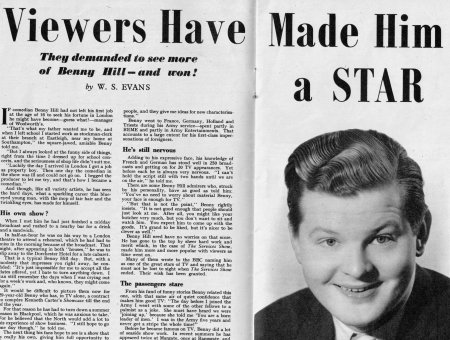
In contrast to the Radio Times, TV Mirror, with its colour picture cover and in-depth articles on the making of television, and its interviews with the stars and programme makers of the day, was a far more interesting read. Whereas Radio Times was mainly (and quite rightly) a listings magazine that was broadcast information heavy and article light, TV Mirror more than successfully filled the gap with articles of interest to the avid TV fan. It was almost certainly an influence when Commercial Television was planning its own magazine, TV Times, which took the same approach to informative articles when it began publishing in September 1955. If TV Mirror had been able to publish TV listings it may have survived much longer. But by 1957 its readership began to decline. In April TV Mirror became TV Mirror and Disc News, incorporating reviews of the latest releases and articles on the pop stars of the day. Later still, in order to keep costs down, the colour cover went and eventually the name was changed to Picture Show and TV Mirror with the main concentration being on movies, until it stopped publishing altogether in 1960.

In 1961 the British Film Institute began publishing its own television journal. Contrast, which was a joint initiative of the BFI, the BBC and Granada Television, was published quarterly, each edition being seasonal, i.e. Winter 1962, Spring 1962, etc. But Contrast was not aimed at the casual television viewer and whilst mainly dealing with British TV production, it also reported on television development and broadcasts across the world. As a collaboration, the magazine was subsidised by it's partners, but those subsidies came to an end in 1963 and the BFI struggled to keep it afloat - reducing the size, simplifying production and reducing staff enabled it to continue until 1966. But after five years, eighteen issues and a hundred or so articles, it published its last in the Spring of that year with an editorial titled Last Look Around or, Why Contrast Failed, explaining that although readership had grown over the life of the magazine it never did so fast enough to overtake the rising cost of production. It's closing paragraph finished on a note of optimism: When the whole history [of television] comes to be written, we feel Contrast will have its own small niche in the story of the sixties.
Indeed, all these publications have now become a vital resource for telling the story of the history of British television. Without them so much would have been lost and their preservation is not only an important part of television history it is, arguably, of vital social importance.
You can still find editions of TV Mirror, TV Mirror and Disc News and Picture Show and TV Mirror on eBay and other bidding sites. Whilst Scan, TV News, TV Weekly and Contrast are much harder to find, TV Mirror will cost you anywhere between £2.50 and £10.00. A bit of an increase on its original 4d cover price, but a reasonable price to pay for the quality and wealth of its content.
Article: Laurence Marcus 2023
Some TV Mirror covers
